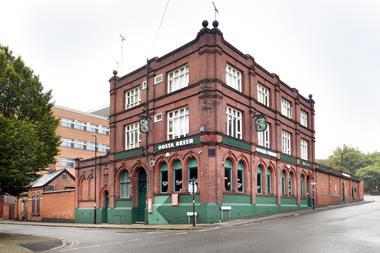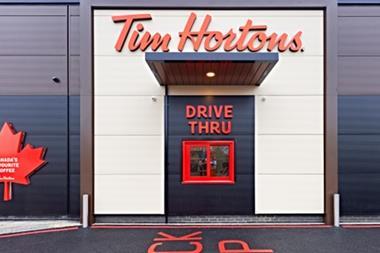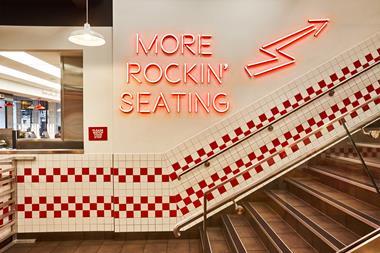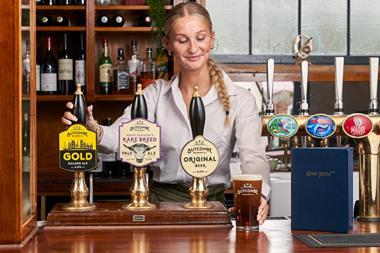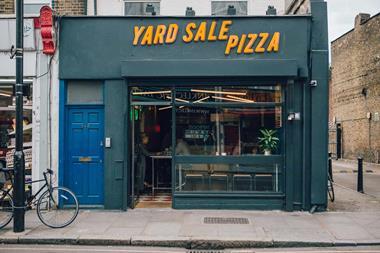Over the past few years crowdfunding has gone from a curiosity to a major source of finance for businesses looking to scale up. Analyst Geof Collyer examines the statistics behind this phenomenon and how it is impacting on the eating and drinking out sector.
The crowdfunding market has become a significant source of new risk capital for start-ups and existing small businesses seeking capital to grow, providing much-needed access to venture capital that the traditional banks would be unlikely to contemplate. According to the 2015 Cambridge University/Nesta report Pushing Boundaries on the alternative finance industry, the UK market grew to £3.2bn in 2015, with 1.09m people investing, donating or lending to more than 250,000 projects, businesses, individuals and not-for-profit fundraisers via online alternative finance platforms.
How big is the market? In 2015, 12% of small business lending was coming from crowdfunding and peer-to-peer lending platforms. Equity-based crowdfunding provided 15.6% of total UK seed and venture-equity stage investment. Equity-based crowdfunding was (and maybe still is) the second fastest growing sector, up by 295% from £84m in 2014 to £332m. The real estate sector is the most popular sector, which may help to explain some of the following points.
Attractiveness to the sector? Crowdfunding has played a part in the drinks and pub/restaurant brand proliferation and additional supply, funding everything from hot chip takeaways and pie & mash shops to pop-up supper clubs, luxury pizzas, street food and Yorkshire meatballs, cocktail bars, tea rooms and frozen yoghurt shops, as well as dozens of microbreweries, gin and whisky distilleries and the odd vineyard.
Analysis of deals
We have tracked around 100 deals (60 pubs/ restaurants/coffee shops/cafés, etc.) and 40 (microbreweries/distilleries/vineyards) raising around £40m of crowdfunded capital, of which around 15% has been in the form of bonds and 85% equity.
It is difficult to be too dogmatic in our analysis of these deals as genuine current comparative data is scarce, and some deals hadn’t closed at the time of our analysis. For example, it was only possible to work out the average investment per person for just over a third of the 100 deals we looked at.
■ It appears that the average fund raise for the microbreweries/distilleries/vineyards has been around £660,000 per project, with average investor contributions of £1,240, equating to around 530 individual shareholders per fund raise.
■ For the pub/restaurant/coffee shop/café sector, it looks like the average fund raise has been £1.03m, with average investor contributions of £2,995, equating to around 345 individual shareholders.
■ For the 36 companies where we could glean data, the aggregate £30m of new capital offered for an average stake of around 15% in the enlarged business, equated to an overall implied equity valuation of £230m.
■ We have excluded BrewDog from these figures as the scale of its crowdfunding distorts the ‘average fund raise’ picture.
■ We have also excluded the 12 groups we found where the fundraising didn’t reach the target or where the project was pulled prior to completion date.
The sector retailers are broadly generating an average new investment of almost double that of the producers, with the average investor also contributing more than double. Maybe this is just the perception of risk reward – a new concept can be picked up by another company and taken to the next level, enhancing the opportunity maybe of an early profitable exit; a freehold property can have alternative uses; a failed site might be more valuable to another operator; or maybe it’s just perceived to be easier to roll out retail sites that may have an asset value as opposed to a new brewery, especially when investors don’t have to take into account the progressive excise duty rebate that can provide a reasonable proportion of a new microbrewery’s profit (sometimes more than all of it).
Despite the low average personal investment, it is obvious for a significant number of deals that there is meaningful demand for many pitches prior to launch. Where it has been possible to ascertain details of large investors, our analysis suggests a spread of 5% to 40% of a new crowdfunded issue has already been pre-sold – a not dissimilar tactic to an underwritten rights issue in the public market. This makes a lot of sense and helps get new fundraising off the ground early, though details of who have been the very early investors are only occasionally made public.
There will be an art as to when a new project stops taking investment over the initial target. It will all be about the pre-preparation and all that is usually done within a couple of weeks of offers going live, because the crowdfunders will have ready lists of the people that are already in line to take the offer up from the restaurants network/existing customer base. The most recent success of early funding is the Wild Beer Co, which raised just over its £1m target within six days of a 28-day funding period.
It does seem that projects that are entirely for growth are more attractive than those that are being used to pay off early development stage borrowings.
Investor naivety
Can you tell if a particular platform’s ‘crowd’ is active? If we look at the Crowdcube website for example, it shows 359,464 registered people in its ‘crowd’, yet looking at the average investment per person (£1,789) from the £220m of projects Crowdcube has funded, it would appear that only around one third of these are active investors – and this assumes that nobody has invested in more than one project, which is highly unlikely. The other two thirds are presumably looking for the right vehicle for their chance to invest in the ‘next big thing’.
Without trying to have a go at what has been an essential new avenue of risk capital funding that traditional banks would not have provided, there is quite possibly a large element of naivety among new investors involved in this space, probably due to the small levels of individual commitment. However, according to AltFi, there is a three-in-four chance of a crowdfunded project succeeding, which we would see as pretty good odds for an illiquid form of pure risk capital.
In our analysis, of the 100 sector projects, 70% of the pub/restaurant/coffee shop businesses were in London, with over half of all leisure sector crowdfunding projects in the capital. This partly helps to understand the drive of new sector supply in London. According to AlixPartners CGA Peach, London has an 11% share of the UK’s licensed sites, but has accounted for c50% share of all the new sites opened in the past five years.
With such a fragmented market (around 300,000 outlets competing for out-of-home spend on eating and drinking in the UK), the hundreds of smaller, more nimble businesses and new entrants would view growth and roll-out potential as limitless. However, just because something works in Soho and Shoreditch doesn’t mean that a new brand/concept/format will work in Sunderland and Sheffield – ie, on a national scale.
It has been amazing to see so many new projects highlighting the multiple that Camden Town Brewery was sold on (around 170x historic EBITDA, according to market estimates), as a reason to invest in their project. The crowdfunding potential gold rush to find the next big thing is in danger of becoming the equivalent to dot.com porn for the sector, with all of the risks that implies.
Dens of equity
Not every deal can be like Camden Town, whose £1.5m crowdfunding capital raise plan (offering 2% of the equity) ended up at £2.75m (for 5.5% of the equity) within two months of launch, valuing the business at £50m. Although this valuation was about a third lower than the original plan, Camden Town was bought by AB InBev for about £85m. At the opposite end of the spectrum, and we are ignoring those new projects that were pulled because demand didn’t reach target, there is at least one successful crowdfunded project that looks to have seriously short-changed its investors. The founder of Flavourly, a luxury food, craft beer and snacks subscription club, turned down a £75,000 investment for 20% of his business on Dragons’ Den in February 2015, and then famously raised £116,000 from Angels Den (in 24 hours, according to Daily Business) and another £515,000 from Crowdcube (for a 34% stake). This implied an equity value for Flavourly of over £1.5m.
In February this year, Flavourly was sold for just £118,000 – less than 10% of its implied value back in February 2015 – to a company called Drinkshare where the Flavourly founder, according to Daily Business, is a director.
Looking for the next big thing
The drinks, pubs and restaurant sector has long been a fertile arena for M&A for as long as I can remember. [i] The strong freehold property base attracts property investors; [ii] for groups seeking to bulk up, and/or to acquire skills to go into a new area; [iii] because someone has a scalable idea and it is worth backing – which has especially been the case in the restaurant sector; or [iv] where an entrepreneur has started a new business that needs funding to take it to the next level – see the multiple owners of Wagamama since its inception.
It will be a remarkable feat if all of these newly founded and crowdfunded start-ups survive – the AltFi stats would suggest that 25% will fail. So don’t be surprised if some of them end being taken over/absorbed by bigger fish seeking to swim against a tide of higher sector costs.
It is not just private investors who want to be involved in the next big thing; existing sector players – both operators and bigger investors – have often found that they can avoid all the early business mistakes by taking a company over that has gone through the early gestation stages successfully.
Since 2012, it has only been possible to work out the acquisition multiples from publicly available data for just 20% of deals, and for just two deals out of the 16 over the past 18 months. Therefore, as with any new start-up investment, any exit multiples are more likely to be based on perceived potential, as opposed to hard commercial historic fact. So to an extent, all types of investors are in the same boat.
■ Geof Collyer, is a leading sector commentator and was for 30 years a sector analyst at Deutsche Bank. He worked for Scottish & Newcastle and ran his own pub group. He is the founder of Lavender Bank Partners



























